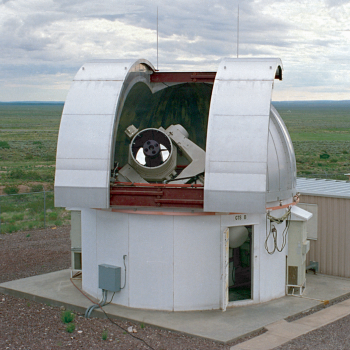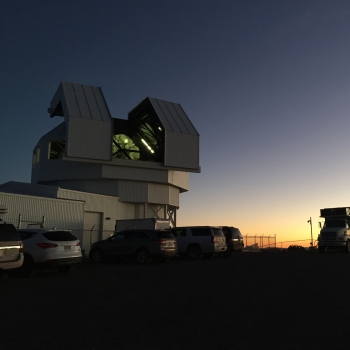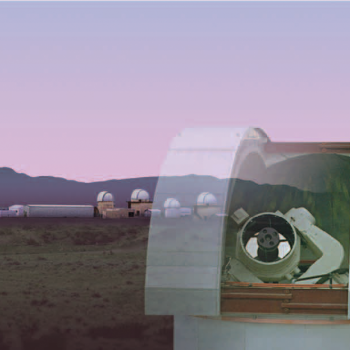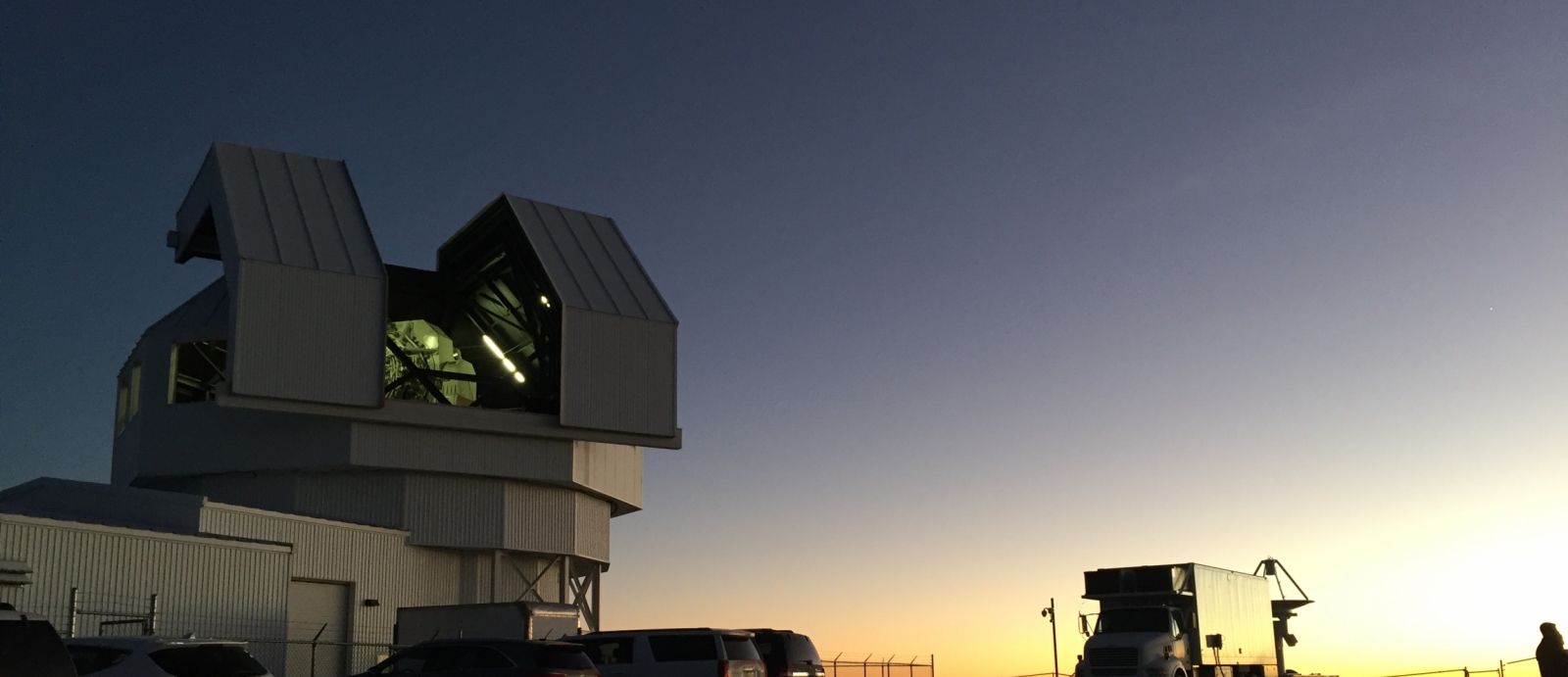
On the Watch for Potentially Hazardous Asteroids
NASA has estimated that about once a year an asteroid the size of a car enters Earth's atmosphere, creating a great fireball while burning up before it reaches Earth's surface; and roughly every 2,000 years, a football-stadium-sized meteoroid strikes Earth causing significant damage. When will the next dangerous asteroid penetrate the atmosphere and seriously impact the Earth? Could that next asteroid be large enough to jeopardize civilization on Earth?
To answer these questions, scientists first need to know what asteroids are orbiting the Sun. Then, their orbits can be calculated to estimate how close the asteroids will come to Earth. Lincoln Laboratory has been working since the late 1990s to help with the discovery and characterization of potentially hazardous asteroids. Our researchers have found more than 20 percent of all known near-Earth objects that are at least 140 meters (460 feet) in size, large enough to have significant regional effects were they to impact the Earth.
Background
In the mid-1990s, Lincoln Laboratory developed a charge-coupled-device (CCD) focal plane upgrade for the Air Force’s ground-based electro-optical deep-space surveillance (GEODSS) system; this upgrade replaced the aging GEODSS cameras that used Ebsicon tubes. The new back-illuminated, large-format CCDs and prototype cameras were tested on two developmental GEODSS telescopes at Lincoln’s Experimental Test Site (ETS) at the White Sands Missile Range near Socorro, New Mexico. These new focal planes both improved the GEODDS system sensitivity and sped up the readout of the collected images. After validating that the new focal planes were capable of wide-area, highly sensitive detection and tracking of satellites, technology transfer of the GEODSS upgrade was initiated, and the prototype CCDs and cameras on the ETS GEODSS telescopes became available for use on other efforts.
In 1996, the Lincoln Laboratory research team experimented with using the GEODSS telescopes to detect asteroids (or as astronomers say, minor planets) and comets. In 1998, Lincoln Laboratory initiated the Lincoln Near-Earth Asteroid Research (LINEAR) program under NASA sponsorship, and LINEAR began using the GEODSS systems equipped with the large-format CCDs for wide-area search for asteroids and comets. In the first month in which the LINEAR program operated this advanced system, more than 151,000 observations were recorded.
Also in 1998, NASA established a major program to discover how many natural objects are in the region termed "near-Earth" — that is, within 121 million miles from the Sun — and catalog which objects come near enough to Earth to be an impact concern. This Near-Earth Object (NEO) program (now the Near Earth Object Observations, NEOO, program) began with a goal of finding and cataloging 90 percent of NEOs larger than 1 kilometer (about 0.6 miles) in diameter, a size at which scientists believed an impact would have worldwide effects. In 2005, the goal was modified to discovering objects greater than 140 meters in diameter to provide scientists with an even more complete view of the asteroids that could cause significant regional damage if they struck Earth.
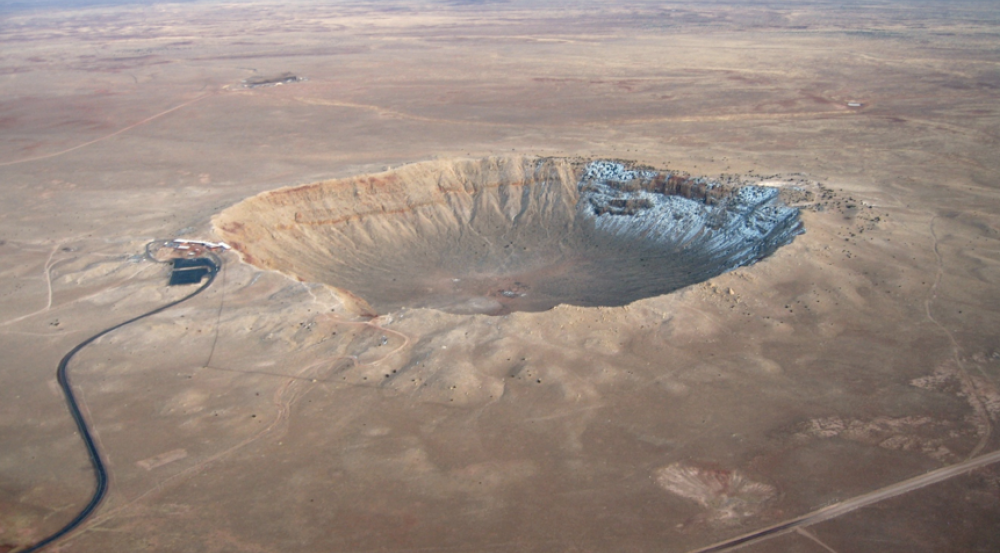
LINEAR became a partner in the NASA program and joined the asteroid search community, along with other NASA-supported ground-based telescopic surveys conducted from high-altitude sites in Arizona, Hawaii, and California. Discoveries of new asteroids and comets are reported to the International Astronomical Union's Minor Planet Center (MPC) at the Smithsonian Astrophysical Observatory, which is responsible for the verification, designation, orbit computation, and official archive for all known asteroids and comets, as well as for other natural objects orbiting the major planets.
In 2013, the LINEAR program began transitioning asteroid search operations to the Space Surveillance Telescope (SST) located at White Sands Missile Range. The 3.5-meter SST, developed by Lincoln Laboratory under sponsorship from the Defense Advanced Research Projects Agency, is an advanced, highly capable telescope, whose innovative curved focal plane is enabling deep, wide-area searches of the night sky to detect small objects in geosynchronous orbits.
The SST has been relocated from New Mexico to the Naval Communication Station Harold E. Holt on the North West Cape in Western Australia, where, as part of the U.S. Space Surveillance Network, it will be operated jointly by the U.S. Air Force and the Royal Australian Air Force. Discussions between NASA and the U.S. Air Force are in progress for extending the current LINEAR asteroid search effort to SST in Australia, with the goal of SST continuing to contribute to NASA’s asteroid search and discovery mission.
Track an asteroid detection


Discovery accomplishments
The LINEAR program has been a reliable, prolific discoverer of NEOs, comets, unusual asteroids, and main-belt asteroids. It has achieved its success by aggressively scheduling the telescopes for as many nights as possible each lunar month and by covering the entire available sky at least once each month, weather permitting.
The LINEAR program is responsible for more than 24 percent of the discoveries of all known potentially hazardous asteroids.
Since the SST began observations in January 2014, the LINEAR program has reported more than 14 million observations of asteroids and comets to the MPC, and has found 6,001 new objects, including 142 previously undiscovered NEOs, four potentially hazardous objects, and eight new comets. In 2015, the LINEAR team submitted 7.2 million observations to the MPC, making SST the most productive asteroid search instrument ever in terms of number of observations submitted in a single calendar year.
Researchers working in the LINEAR program have also contributed to the scientific characterization of the NEO population through their analysis of the number, orbital properties, albedo properties (i.e., reflection of solar radiation), sizes, and impact hazards of NEOs. The archive of LINEAR images generated from the 1-meter GEODSS telescopes located at ETS (amounting to more than 6 million images) has been made available to scientists doing astronomical investigations.
Although the discovery of new asteroids has been driven by astronomers' curiosity, an important motivation is scientists' desire to predict and plan for an asteroid’s collision with Earth. With knowledge of the number, composition, and behavior of the vast population of asteroids, scientists gain a better understanding of the likelihood and the potential effects of such collisions. One goal of NASA's continuing NEOO program is to provide data that could help nations prepare to reduce the damages that would be caused by an asteroid impacting Earth's surface.
A unique educational outreach program
The discoverer of an asteroid obtains, under the rules of the International Astronomical Union (IAU), the right to suggest a name for it. By 2001, Lincoln Laboratory had amassed naming rights for tens of thousands of asteroids. The LINEAR team decided to use these naming rights to promote science education in the international community. Names for LINEAR-discovered asteroids that the Laboratory proposed to the IAU would honor outstanding middle school and high school science students. Since 2001, we have worked with the Society for Science and the Public, which administers several national and international science fairs, to identify the students, and their teachers, who the IAU has agreed to recognize with asteroid names.
The asteroid-naming program — called the Ceres Connection after Ceres, the first asteroid ever discovered — acknowledges about 250 individuals each year. Thus, over the years, thousands of top-ranking students and their teachers have returned to their classrooms knowing that excellence in science can result in a piece of the solar system being officially named in their honor.
